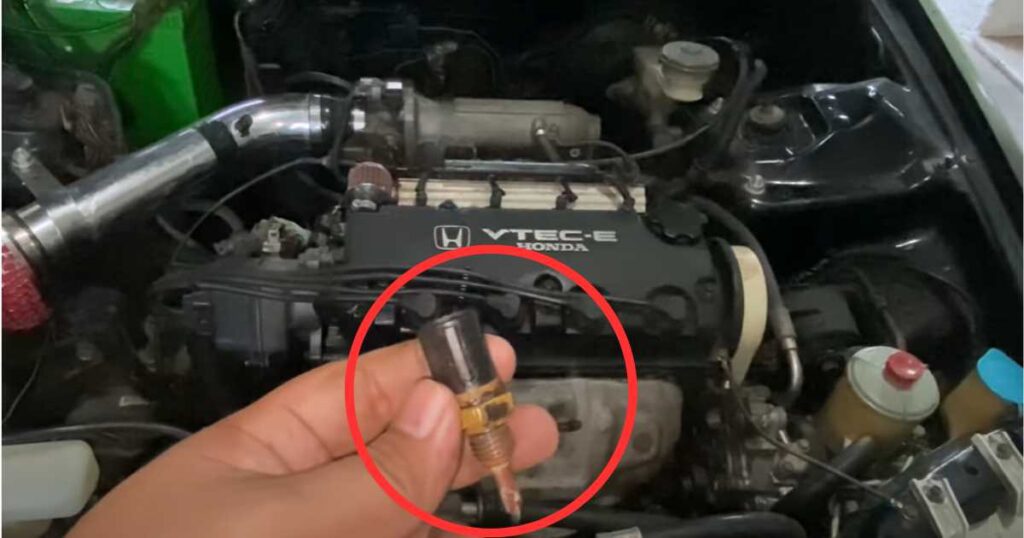Introduction
Have you ever wondered how your car seems to know exactly what’s going on at all times? Well, the answer lies in the sophisticated network of sensors that work tirelessly behind the scenes. Car sensors serve as the eyes and ears of your vehicle, monitoring various aspects and relaying vital information to the onboard computer system. In this article, we will learn about the different types of car sensors and its functions. Get ready for an insightful journey through the intricate web of automotive technology!

1. Oxygen Sensor (O2 Sensor)
At the heart of your car’s emission control system is the oxygen sensor, also known as the O2 sensor. This sensor measures the proportion of oxygen in the exhaust gases to optimize the air-fuel ratio for combustion efficiency. Here’s how it works:
- The O2 sensor is positioned in the exhaust system, typically before and after the catalytic converter.
- It constantly detects the level of oxygen present in the exhaust gases, allowing the engine control unit (ECU) to adjust the air-fuel mixture accordingly.
- A faulty O2 sensor can lead to decreased fuel efficiency, increased emissions, and even engine performance issues.

2. Mass Airflow Sensor (MAF Sensor)
The mass airflow sensor, or MAF sensor, takes charge of measuring the quantity of air entering the engine. This data is crucial for maintaining the optimum air-fuel mixture. Let’s uncover the intricacies of this sensor:
- Positioned between the air filter and the engine’s intake manifold, the MAF sensor determines the density and hence, the mass of the incoming air.
- By calculating the air mass, the ECU accurately adjusts the fuel injection for optimal combustion.
- A malfunctioning MAF sensor can cause a rich or lean air-fuel mixture, leading to reduced performance and fuel economy.

3. Engine Coolant Temperature Sensor (ECT Sensor)
To ensure your engine doesn’t overheat or run too cold, the engine coolant temperature sensor plays a vital role. Here’s what you need to know about this sensor:
- The ECT sensor continuously monitors the coolant temperature and relays the information to the ECU.
- This data allows the ECU to optimize fuel delivery, ignition timing, and other parameters based on the engine’s operating temperature.
- A faulty ECT sensor can result in inaccurate temperature readings, leading to overheating or cold start issues.

4. Knock Sensor
The knock sensor serves as a guardian against engine knocking or pre-ignition, a potentially damaging condition. Let’s explore the purpose and functionality of this sensor:
- The knock sensor is typically bolted to the engine block or cylinder head, detecting the subtle vibrations caused by knocking.
- Whenever knocking is detected, the sensor sends a signal to the ECU, which then adjusts factors like ignition timing to prevent engine damage.
- A malfunctioning knock sensor can reduce engine performance, fuel efficiency, and even lead to internal engine damage if knocking persists.

5. Throttle Position Sensor (TPS)
Responsible for measuring the position of the throttle valve, the throttle position sensor ensures the right amount of air enters the engine. Here’s how it operates:
- The TPS is usually mounted on the throttle body and monitors the throttle plate’s position.
- It transmits this information to the ECU, enabling precise control of the air-fuel mixture and the engine’s torque output.
- A faulty TPS can cause irregular throttle response, poor acceleration, and even stalling.

6. ABS Sensor (Anti-lock Braking System)
When it comes to ensuring your safety on the road, the ABS sensor plays a critical role. Let’s dive into its purpose and functionality:
- The ABS sensor, located near each wheel, detects the rotational speed of the wheels.
- By continuously monitoring wheel speed, the ABS system can detect if any wheel is about to lock up during braking.
- The ABS system then adjusts brake pressure on individual wheels to prevent skidding and maintain steering control.
- A malfunctioning ABS sensor can render the ABS system ineffective, compromising your vehicle’s safety.
Remember: “Car sensors are like silent guardians, tirelessly working behind the scenes to keep you safe and your engine running smoothly.”
Conclusion
Car sensors are the unsung heroes of modern automotive technology, silently performing their tasks to provide optimal performance, efficiency, and safety. Understanding the different types and functions of these sensors allows us to appreciate the intricacies of our vehicles and make informed decisions when it comes to maintenance and repairs. So the next time you’re behind the wheel, remember to thank the sensors that keep you rolling smoothly and safely on the road. Stay informed, stay safe!
Also read: Understanding Active and Passive Safety in Cars: Protecting Lives on Road


Элвис Пресли, безусловно, один из наиболее влиятельных музыкантов в истории. Родившийся в 1935 году, он стал иконой рок-н-ролла благодаря своему харизматичному стилю и неповторимому голосу. Его лучшие песни, такие как “Can’t Help Falling in Love”, “Suspicious Minds” и “Jailhouse Rock”, стали классикой жанра и продолжают восхищать поклонников по всему миру. Пресли также известен своими выдающимися выступлениями и актёрским талантом, что сделало его легендой не только в музыке, но и в кинематографе. Его наследие остается живым и вдохновляет новые поколения артистов. Скачать музыку 2024 года и слушать онлайн бесплатно mp3.
Share this post as much as possible
I like this site it’s a master piece! Glad I
noticed this ohttps://69v.topn google.Raise blog range
Share this post as much as possible